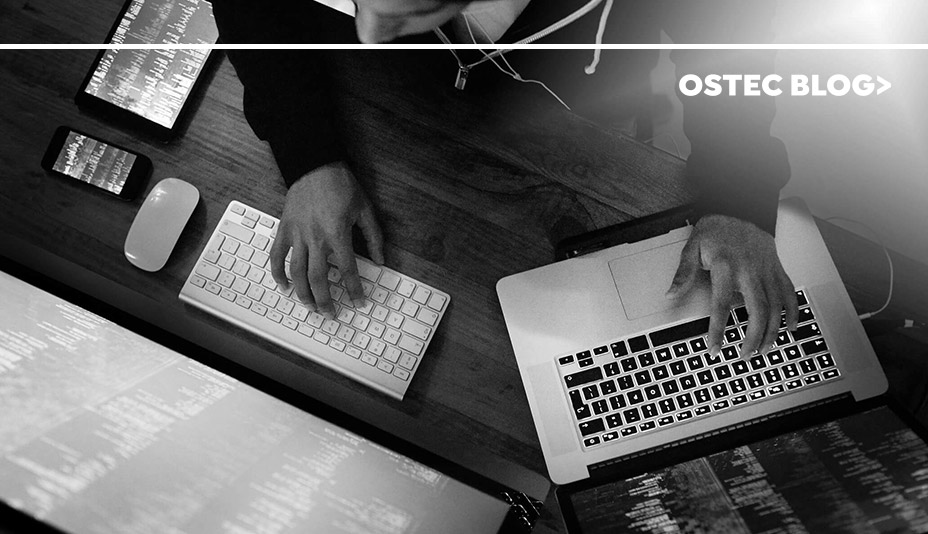This post is also available in: Português English Español
Can you imagine your life today without internet? It is difficult for people and businesses to live without this resource. It facilitates communication, streamlines processes, allows data exchange, access to information, and a host of other benefits. However, do you know that neglecting digital safety principles can negatively influence employee productivity?
A survey conducted by OSTEC and NEOTRIAD, which aimed to trace the profile of Internet usage in Brazilian companies, revealed that approximately 57% of the respondents would have great difficulty performing their work activities in case of unavailability of the internet resource.
In addition to reporting how dependent employees are on the internet resource, the survey identifies the misuse of the feature as a major driver of dispersion in the workplace, reflecting lack of productivity. It is therefore necessary to understand the impact generated by such attitudes and how to promote changes in the environment to circumvent these situations.
Continue reading this content and learn how to take the first steps towards a more engaged and productive organization.
Data that proves the damages generated by the misuse of the internet
Some say that access to all sorts of websites and applications does not affect performance during the work period. It is not what several researches on the subject point out. And then we brought some of this data to make you open your eyes and see this problem.
We have already shown in a previous post, where we talked about the consequences of improper use of the internet, in a broader way. When it comes to productivity, it is possible to refer to a survey by Triad, a productivity consulting company, which revealed that 80% of respondents spend up to 3 hours a day on personal activities during their working hours. In the study, 35.6% stated that the use of the Internet is what detracts from the focus of the work.
Similar result was presented by the survey carried out by Ostec and Neotriad, which was also referenced in this blog post. According to the survey, 21% of employees use the Internet for non-work associated with high frequency, 61.4% infrequently, and only 17.5% do not use the Internet for personal purposes.
It is no wonder that Brazil is in the 50th position in the productivity ranking, which evaluated 68 countries, according to a survey developed by the Getúlio Vargas Foundation.
Does blocking access to websites and applications solve?
In this same research, we found that 62.6% of employees affirm that they use alternative means to access non-work-related content through personal devices, avoiding access through the corporate network.
That is, even if access is blocked by the corporate network, nowadays with the ease of access to the internet through mobile networks, it is very difficult to prevent the deviation of attention generated by this behavior using only the blocking to websites and apps.
It is therefore necessary that there be awareness and a solid policy for control of internet use, which also includes rules to regulate the use of personal devices.
How to establish controls and increase productivity
The first step is to inform and raise awareness. Using the Internet indiscriminately during working hours not only ends with productivity, but also exposes the organization to other risks related to digital security.
With an efficient access control you can reduce the occurrence of Shadow IT, also prevent the download of unauthorized applications and thus avoid security breaches and all its consequences.
Thus, it is up to the managers and CIOs to implement an Internet use policy that establishes the rights and responsibilities of those who use it, in addition to being transparent in issues such as:
- Which employees can use the internet;
- Which websites and applications are allowed;
- Situations considered abusive;
- Privacy of personal information, whether of customers, users or employees;
- Confidentiality of institutional information, that is, whether it can be passed on to third parties, among others.
From this, one can look for applications and tools that help in traffic control and monitoring of this operation.
One possibility is to create controls based on groups or users. In this way, for example, the group that works in the marketing sector, can have unrestricted access to social networks, while another sector may have this limited access.
Flexing certain content by schedule is also an efficient strategy to minimize the rigidity of security policies. In this way, users can have daily quotas of use for certain purposes, or specific times where websites are allowed.
Another option is to control access by categories, as can be done with the aid of the OSTEC UTM product that has a feature called OSTEC WebEyes, with 32 billion sites classified in more than 180 categories such as religion, entertainment, adult content, games, online shopping, banks etc. This feature provides high efficiency to established controls over internet usage.
Enhance your digital security and ensure maximum productivity
Creating controls over the internet and implementing other features that ensure digital security in the enterprise are essential for organizations that want to stay competitive and on the rise in the market
Security breaches can have extremely negative impacts. Sequestration or data leakage, theft of information or bank data are just a few examples of situations that can generate losses for companies.
Control over the use of the Internet is only one of the items that can be treated with the application of digital security solutions, but the universe of application within organizations is much broader.
If you are interested in diving a bit more into the world of digital security, feel free to contact one of our experts!
This post is also available in: Português English Español









